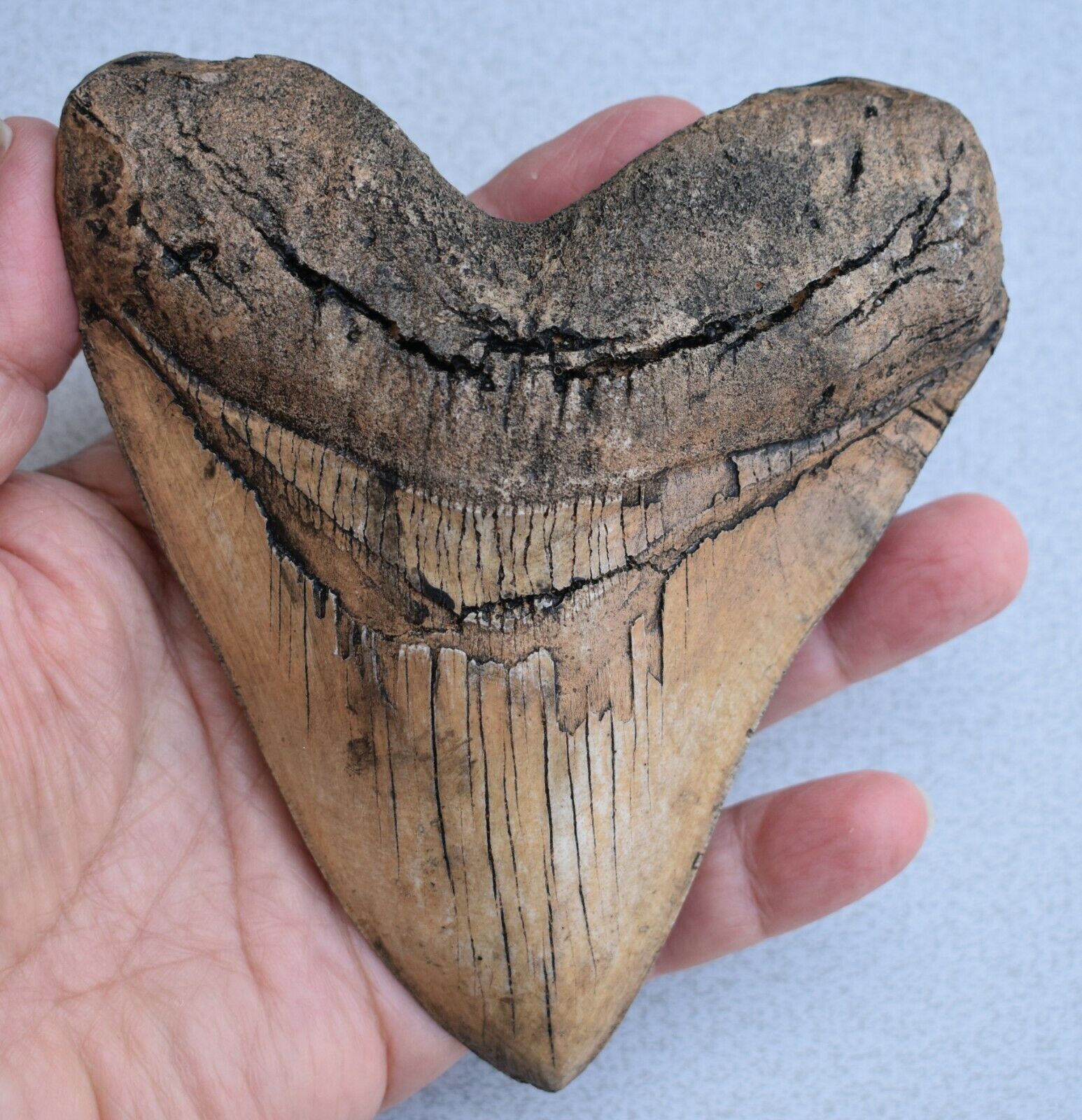-40%
5.5 Inch Caramel Megalodon Shark Tooth (replica 2121) (Carcharocles megalodon)
$ 12.14
- Description
- Size Guide
Description
Megalodon Shark Tooth (caramel replica)Carcharocles megalodon
5.5 Inches Diagonal Measure
Made of Solid Resin
Fossil Megalodon teeth are relatively common in some areas of the world, such as the coastal regions of the southeast United States. Most adult Megalodon teeth fall into the 4-5” size range. As teeth approach 6 inches they become rare, representing far less than 1% of teeth. These 6 inch teeth obviously represented extremely large individual sharks. Real fossil MEG teeth are generally black to caramel in color because of the minerals found in the sediment and rock where they were fossilized.
Megalodon (Carcharocles megalodon), meaning "big tooth", is an extinct species of shark that lived approximately 23 to 3.6 million years ago, during the Early Miocene to the Pliocene Epoch. It was formerly thought to be a member of the family Lamnidae, making it closely related to the great white shark (Carcharodon carcharias). However, presently there is near unanimous consensus that it belongs to the extinct family Otodontidae, which diverged from the ancestry of the great white shark during the Early Cretaceous. Its genus placement is still debated, authors placing it in either Carcharocles, Megaselachus, Otodus, or Procarcharodon.
Scientists suggest that megalodon looked like a stockier version of the great white shark, though some experts believe it may have looked similar to the basking shark (Cetorhinus maximus) or the sand tiger shark (Carcharias taurus). Regarded as one of the largest and most powerful predators to have ever lived.
D
ata suggests that mature adult megalodons had a mean length of 10.2 metres (about 33.5 feet), the largest specimens measuring 17.9 metres (58.7 feet) long. Some scientists, however, contend that the largest forms may have measured up to 25 metres (82 feet) long. Studies estimate that adult body mass ranged from roughly 30 metric tons (1 metric ton = 1,000 kg; about 66,000 pounds) to more than 65 metric tons (about 143,000 pounds), adult females being larger (in both length and mass).
Their large jaws could exert a bite force of up to 110,000 to 180,000 newtons (25,000 to 40,000 pounds). Their teeth were thick and robust, built for grabbing prey and breaking bone.
Megalodon probably had a major impact on the structure of marine communities. The fossil record indicates that it had a cosmopolitan distribution. It probably targeted large prey, such as whales, seals, and sea turtles. Juveniles inhabited warm coastal waters and fed on fish and small whales. Unlike the great white, which attacks prey from the soft underside, megalodon probably used its strong jaws to break through the chest cavity and puncture the heart and lungs of its prey.
The typical authentic 5 to 6 inch Megalodon tooth sells for 0 to 0 depending on exact size and condition. This makes our replica a great addition to any collection or as a special gift.
THE IMPORTANCE OF FOSSIL REPLICAS
By definition authentic fossils are unique one of a kind occurrences. No two fossils are identical. In fact many fossils are the one and only known specimen of a particular genus or species. With only one specimen available for study how do paleontologist around the world study such rare and often very fragile specimens? One answer to that question is through replicas cast directly from the original fossil. This way many exact copies can be made and distributed for research and museum display all over the world. Thus fossils replicas are an important scientific tool. In some cases a replica of a fossil lost or destroyed may be the only remaining evidence of the original fossil. Replicas allow direct study of otherwise unattainable specimens. Replicas allow the public to see, enjoy and learn about specimens that otherwise might be locked away in some storage cabinet or vault. For example, there is only one original Archaeopteryx specimen known as the Berlin specimen and that original is kept in a vault in Germany. However, nearly every museum in the world displays a replica of this important fossil. Another example is the Tyrannosaurus rex known as “Sue” the most complete specimen ever found. There is only one original but replicas are in museums all over the world. The importance of replicas in paleontology and education cannot be overstated.
Quality Fossil Replicas Since 1999. Prehistoric Planet, Prehistoric Store, PaleoClones















